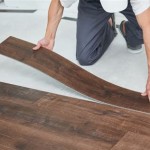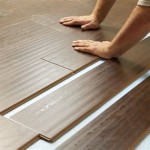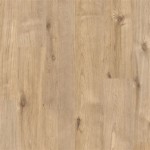Understanding the Importance of Underlayment for Luxury Vinyl Plank Flooring on Concrete
Installing luxury vinyl plank (LVP) flooring on concrete is an increasingly popular home improvement choice for its durability, ease of maintenance, and aesthetic appeal. However, underlayment plays a crucial role in ensuring the longevity and performance of your LVP flooring.What is Underlayment?
Underlayment is a thin layer of material placed between the concrete subfloor and the LVP planks. It provides additional cushioning, moisture protection, and sound insulation.
Why Use Underlayment with LVP on Concrete?
Using underlayment with LVP on concrete offers several benefits:
Cushioning:
Underlayment absorbs impact and provides a comfortable walking surface.Moisture Protection:
It creates a barrier between the concrete and the LVP, preventing moisture from damaging the flooring.Sound Insulation:
Underlayment reduces noise transmission, making your home quieter.Leveling:
It can help to level out minor imperfections in the concrete subfloor.Extended Warranty:
Many LVP manufacturers require the use of underlayment for their warranties to remain valid.
Choosing the Right Underlayment
When selecting underlayment for LVP on concrete, consider the following factors:
Thickness:
Choose underlayment that is between 2mm and 6mm thick for optimal performance.Material:
Common materials for underlayment include polyethylene foam, cork, and rubber.Moisture Barrier:
Opt for underlayment with an integrated moisture barrier to prevent damage from moisture vapor.Sound Insulation:
If noise reduction is a priority, choose underlayment with higher sound insulation ratings.Compatibility:
Ensure that the underlayment you select is compatible with the specific LVP flooring you are installing.
Installation Tips
For successful underlayment installation:
Clean and Dry Surface:
Ensure the concrete subfloor is clean, dry, and level before laying the underlayment.Lay Out the Underlayment:
Unroll the underlayment and overlap the seams by at least 3 inches.Tape the Seams:
Use tape or adhesive to secure the seams of the underlayment.Trim Excess Underlayment:
Trim any excess underlayment along the edges of the room.Install the LVP Flooring:
Once the underlayment is installed, you can proceed with the installation of the LVP flooring following the manufacturer's instructions.
Conclusion
Using underlayment beneath LVP flooring on concrete is essential for ensuring optimal performance and longevity. By choosing the right underlayment and following proper installation techniques, you can enjoy a durable, comfortable, and noise-reducing flooring solution that enhances the beauty and functionality of your home.

Do You Need Underlayment For Vinyl Plank Flooring

Underlayment For Vinyl Flooring Best Options Home Pros

Underlayment For Vinyl Floors 2 Big Questions Answered Pliteq Inc

Underlayment For Vinyl Flooring The Only Guide You Need Floor City

Do You Need An Underlayment For Vinyl Plank Flooring

How To Prepare A Concrete Floor For Vinyl Flooring Parrys

Do I Need An Underlayment For Vinyl Flooring Lx Hausys

Do I Need Flooring Underlayment How To Decide Which Jona Panel S Inc

Underlay For Vinyl Do You Actually Need It We Have Answers

Do You Need An Underlayment For Vinyl Plank Flooring
See Also







